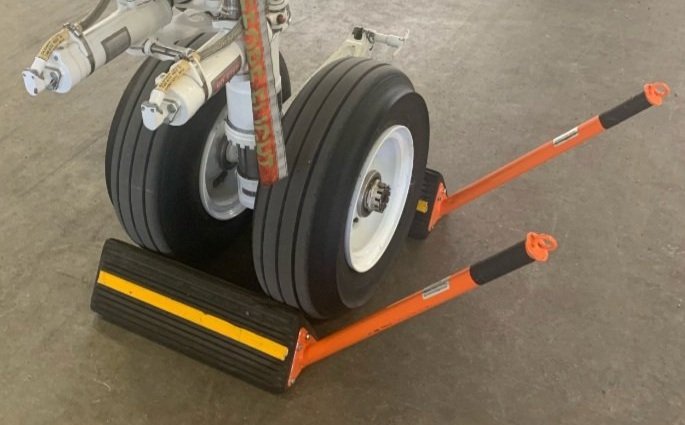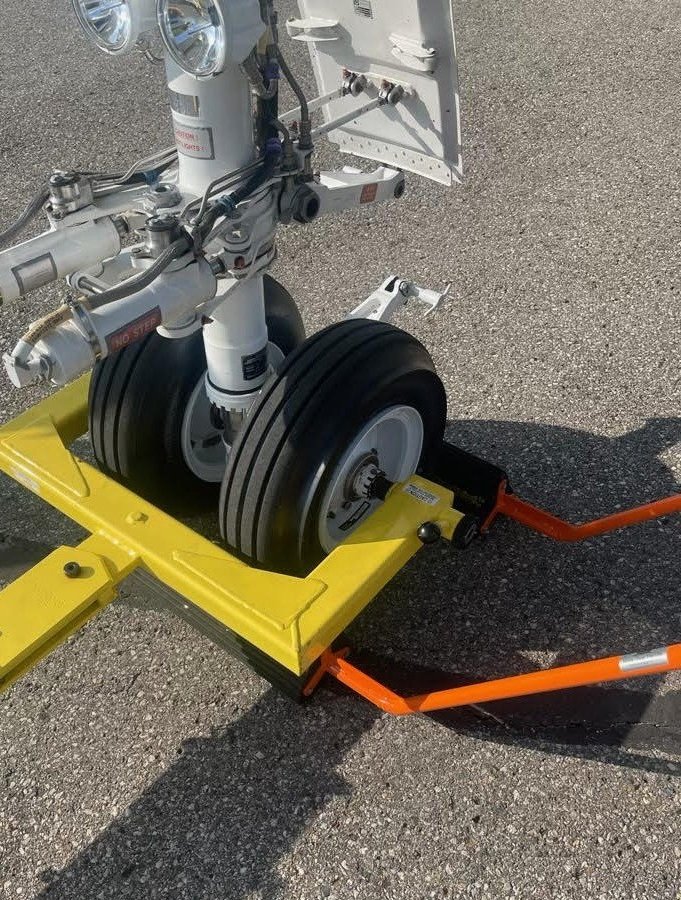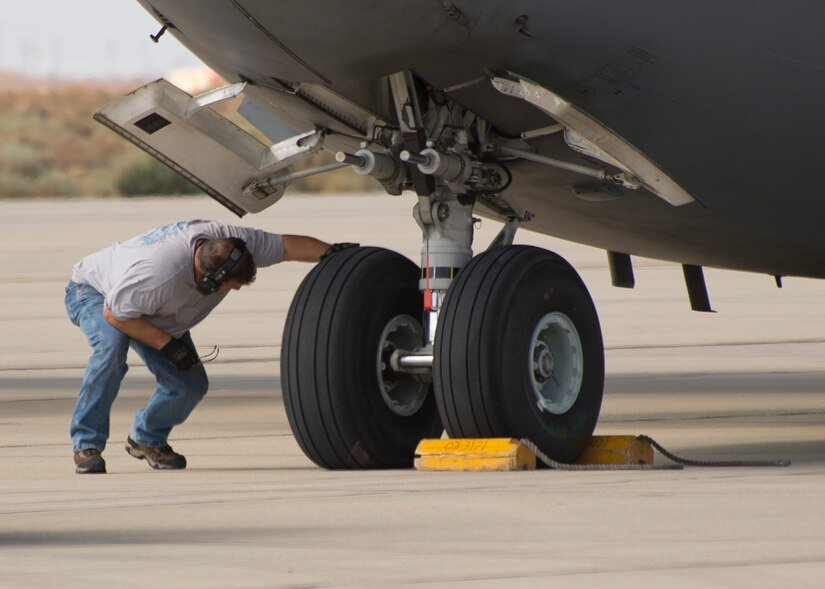THE FUTURE OF AVIATION CHOCK HANDLING WITH NO HAZARDS
Introducing…
-

MG 201: Main Gear Model
Used for the Main Gear and the Nose Gear
-

NG 101: Nose Gear Handle
Used for aircraft requiring an extended tow bar.
Chock It Explained
-
Today, a typical wheel chock designed for the aviation industry takes the form of a wedge of durable, usually extruded rubber, material. Wheel chocks are commonly adorned with a flexible rope or cable in an attempt to alleviate the unnecessary lifting and to allow workers to drag the chocks on the ground.
Despite being able to drag chocks to place, airline workers must still strain to reach below knee-level to remove wheel chocks via flexible rope, increasing each worker’s Musculoskeletal disease (MSD) risks. Because the ropes must lie on the ground in use, this also exposes the ropes to rain, sleet, snow, de-icing fluid, fuel, and other contaminants on the ramp. Even with the proper Personal Protection Equipment (PPE), workers gloves are directly affected by the contaminated ropes.
The current attachments to chocks are not suitable for long-term use or even frequent use. Flimsy cable, rope, and chain attachments can break off, causing Foreign Object Damage (FOD) threats for aircrafts. These can also actively break off in a worker’s grasp while transporting a chock, potentially resulting in a slip or fall.
With our design, Chock It, we have discovered an opportunity to potentially eliminate all current hazards involved with aviation wheel chocks.
-
Chock It is an engineering control that redesigns aviation wheel chocks to enable neutral postures in workers, keep lifts between knee and shoulder height, eliminate FOD threats, and increase the visibility of wheel chocks.
Chock It is an improved wheel chock assembly design that features a rigid handle with a mounting plate portion fixed to one of the end faces, a support or stabilizer portion that extends into the central passage and engages the wall of the passage, and a handle portion that extends upward and outward at an acute angle from the mounting plate portion to a distal free end where a handgrip is provided for optimal hand coupling.
CURRENT AVIATION CHOCK HANDLING HAZARDS:



